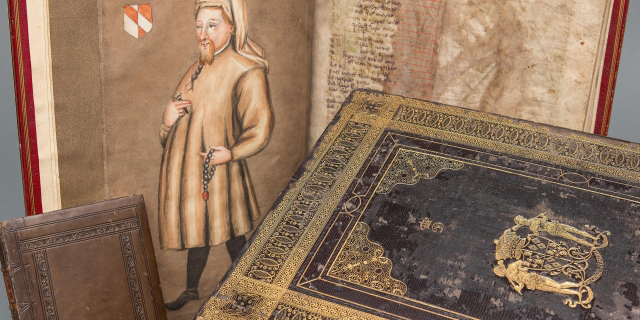
“Making the Medieval English Manuscript: The Takamiya Collection” is a celebration of the newest gem in the Beinecke Rare Book and Manuscript Library’s permanent holdings: the largest and most comprehensive modern collection of medieval English manuscripts in the world.
The collection was assembled and previously owned by Professor of English Literature Emeritus Takamiya of Keio University in Tokyo, whose unique scholarly insights led him to acquire the historical manuscripts at a time when they were still relatively undervalued. The Beinecke procured the texts as a long-term loan from Takamiya in 2013, and they recently became a permanent part of the library’s reserves. This exhibit is designed to showcase the incredible beauty and detail present in the Takamiya trove.
Each book in the collection is a stunning illustration of medieval English craftsmanship. Lavishly decorated pages, like those of “The Devonshire Chaucer,” feature rich colors, still amazingly vibrant today, and gold leaf designs. Handwritten text elegantly scrolls across each page.
Yet one cannot fully appreciate the artistry of medieval manuscripts without understanding the immense amount of time and energy that went into creating these detailed works. The accompanying information panels inside each glass display case provide interesting insight into both the manufacturing process and individual manuscripts within the collection.
One case describes the parchment-making process, which involves soaking, stretching and scraping the skins of calves, sheep or goats to produce paper-thin sheets. The information card points out one parchment sheet so thin that the animal’s vascular structure is visible through the skin. Another case details the quiring and binding of books and yet another the pigments involved in creating ink and the way scribes would copy down text using feather quills taken from the left wing of a goose in order to ensure proper curvature of the quill.
Medieval manuscripts were incredibly expensive to produce due to all of this highly detailed work. More unusual books were virtually impossible to replace, so scribes or owners chose to include anti-theft mechanisms. The Latin phrase “anathema sit” (let him be cursed) or even chains served to ward off would-be book thieves. The more paranoid book owners often chose to sport “wearable books” hanging from their girdles.
As one becomes more aware of the details within each manuscript, inconsistencies that make the individual artifacts unique become more obvious. Rough patches show where a scribe scratched off a mistake, and writing in the margins shows where book owners made notes to themselves. While the collection’s three copies of Chaucer’s “Canterbury Tales” may seem excessive at first, slight stylistic and textual differences make the trio an extremely rare set.
Since the library’s initial acquisition of the collection in 2013, researchers have catalogued the manuscripts digitally, and this work was incorporated into the current exhibit. Two digital screens give viewers the opportunity to zoom in on high-resolution images of manuscript pages and listen to modern recordings of the medieval choir sheet music contained in one book. This addition brings the exhibit into a modern context and gives viewers a more immersive and hands-on experience.
Nonetheless, it is refreshing to see technology used in a way that complements an exhibit without detracting from the experience of viewing the original texts. The physical books, and the details within them, take center stage in this exhibit.
Takamiya’s collection seamlessly blends history and art, preserving culture and inspiring scholarship in the modern world. And by teaching us to look closer, Takamiya’s collection might just cause us to slow down and appreciate the details. The exhibit is on display at the Beinecke until December 10th.
Contact Allie Schneider at allie.schneider@yale.edu .







